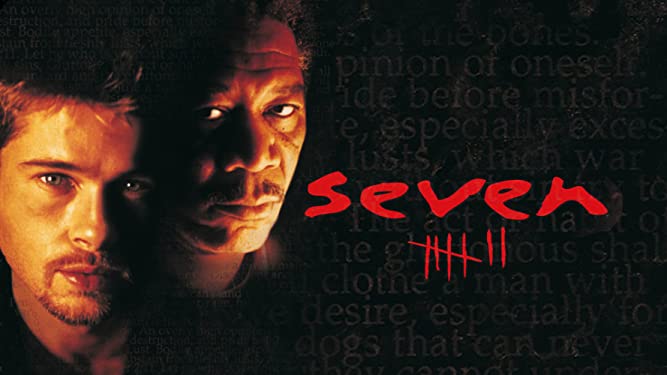In the grim yet oddly fascinating world of the 1995 thriller Seven, director David Fincher gives us a real mind-bender. We follow a serial killer who takes his job way too seriously, targeting his victims based on the Seven Deadly Sins – gluttony, greed, sloth, pride, lust, envy, and wrath. It’s a wild ride through human weirdness and the messy results of obsession. The visuals hit hard, and the music can stick with you long after the credits roll. Deemed too dark and evil for many actors who passed on playing a role in the film1, it was almost ahead of its time. For more than one reason, I could show this movie to people and tell them it came out in 2023, and they would have reason to believe me; nowadays, it isn’t uncommon to have a movie that really dives into the darker and grimmer side of society. But in 1995? That was pretty unheard of, and it caused quite the kerfuffle with both audiences and critics alike – but that didn’t stop Fincher from creating the film the way he wanted to.
The spec script was written over a two-year period by Andrew Kevin Walker while working at a Tower Records in New York City. He had just moved there from suburban Pennsylvania in 1986, when New York was going through a tumultuous time with a rise in crime and drug abuse throughout the city. Walker was inspired by his real life interactions with crimes and sins unfolding on a regular basis on city streets, leading to him coming up with the idea of someone who deliberately fixates on these sins and acts on them. Fincher was coming off of his directorial debut with Alien 3 in 1992, where he had an awful experience with a controlling studio and stating, “I’d rather die of colon cancer than make another movie.” The jury is still out on whether or not he truly had no intentions of directing another movie, but either way that threat was quelled when he read the script for Seven. Fincher immediately went to work in negotiating and fighting for what he wanted so as to not find himself in another situation where he is at the mercy of executives and studio heads, which had an immediate and lasting impact on the movie. There was quite the conversation around the ending of the film, and which direction it should go. Fincher, Pitt, and Freeman all vouched for the original ending of the script, which is what made it to the final cut of the movie; but studio execs and test audiences found it revolting and depressing, desiring a more hopeful and “Hollywood” type ending where the hero saves the day. Fincher and Walker continued to fight for what they wanted and eventually won over the suits, and thus we ended up with one of the more memorable film endings in cinema. This ended up being the jumping off point not only for Fincher’s career as a whole, but also for his style of work and the kind of director he would grow into. He is now known as one of the greats, and as a director that you know is getting final cut over his films and making them look, sound, and feel exactly as he wants. He would go on to direct other great films like Fight Club, Zodiac, The Social Network, and Gone Girl, while also executive producing shows like House of Cards and Mindhunter.
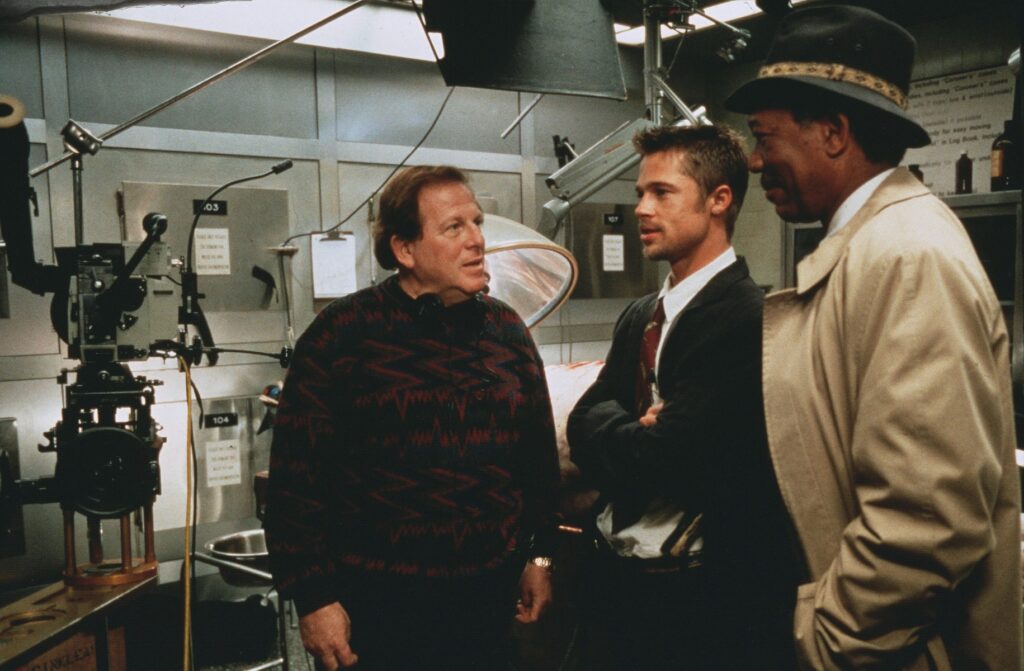
Let’s take a second to talk about the tone of this film, because that has also been a point of contention since the movie entered pre-production all those years ago. It is no secret that I am a big fan of dark movies and television; there’s just something about it that grips me from the jump. Mindhunter is one of my favorite shows, and it follows the creation of the FBI’s psychological wing, where two agents go around the country interviewing serial killers to get inside their minds and figure out why they did what they did. Nothing fun or lighthearted about that, but here I am all these years later still wishing that they would make a third season! In the same vein, Seven follows two cops trying to find a serial killer and stop him before he completes his own Seven Deadly Sins – nothing hopeful or bright about that, but it has long been a movie on my watchlist that I finally broke down and paid $4 to rent on Amazon because for some reason, no streaming services have any interest in hosting it on their platform. What’s interesting about Seven is that it is such a violent movie, but there is hardly any violence in it. We never actually see John Doe kill anyone, just the aftermath of his work. We have a great chase scene midway through the movie where shots are fired, but none of them land and there are hardly any physical encounters until the very end of it – heck, the only real “violence” in the movie is at the very end when someone actually gets shot and killed. But it is the tone of the film throughout that heightens those senses and leaves us feeling “violated and exhausted” as Walker put it, which both the script and direction work hand in hand to accomplish. Through subtle (or not so subtle) things like dark lighting throughout, constant rain in outdoor shots (contrasted with the dryness and brightness of the final scene), the way each victim is staged almost like an art exhibit, and the contrast of how Mills and Somerset work as partners, this almost feels more like a noir film than an action thriller. If you’ve watched any other Fincher films you’ve probably noticed this with a lot of his work, but this was 1995 when he was only known for Alien 3 and a bunch of music videos and commercials – it was pretty jarring. A lot of people would put this at the top of the list of the most violent and bleak blockbuster movies of all time, lest we forget that this movie made well over $300 million at the box office worldwide.
With that being said, let’s open up the box of categories and see what’s inside, shall we?
By the Numbers
- Release date: September 22, 1995
- Budget: $33-34 million
- Box office: $327.3 million
- Run time: 127 minutes (2 hours, 7 minutes)
- Letterboxd rating: 4.3 ★
- My Letterboxd rating: 4.5 ★
- Rotten Tomatoes: 84% (Certified Fresh 🍅)
- Accolades: 44 total nominations, 29 total wins
- 1 Academy Award nomination, 0 wins (Best Film Editing)
- 4 MTV Movie Awards nominations, 3 wins (Best Movie, Most Desirable Male, Best Villain)2
- Two: This was David Fincher’s second feature film that he directed
Best Scene
- The Dinner Scene: As a quick side note, I can’t remember the last movie I wrote about here where I didn’t include the opening scene as one of the best scenes, but I don’t have Seven‘s opening scene on this list at all. Anyways, this is one of the more classic cop movie/buddy cop/police procedural scenes, and the most stereotypical scene in this whole film – but that doesn’t mean it isn’t done well. Det. Somerset is invited over to Det. Mills’ apartment for dinner by his wife, Tracy, so they can all get to know each other better. This scene helps give a lot of exposition about David and Tracy’s marriage, where they came from, and a little backstory on Somerset as well. It also provides us with the classic “coming together” scene where the two guys who don’t get along with each other, finally start to get along with each other. Again, it’s a Hollywood staple and is arguably one of the more bland sequences within the film, but it adds a nice stabilizer and break from the chaos of the rest of the film. It’s also just nice to see Gwyneth Paltrow being adorable and affable like only a young Gwyneth Paltrow can.
- John Doe Surrenders: Ah yes, we finally have to talk about the elephant in the room – Kevin Spacey. I debated whether or not I even wanted to write about this film because of his participation in it, but I found that it wouldn’t be fair to everyone else who worked so hard on this film to not recognize them and the larger whole that this movie is. I’ll just keep it simple: I think that Kevin Spacey is a piece of garbage human being and he has done some despicable and awful things. I am going to try and focus most of my praise for this role on the writing and direction of it, and less on Spacey’s performance; that being said, I cannot ignore the fact that he did an incredible job playing this role. Okay I think that covers it and I hate that I had to do that, but let’s just briefly talk about this scene since this is already such a long paragraph. I think it was great that Walker intentionally wrote this scene to upset the audience – we don’t get our heroes chasing John Doe down or catching him in the act of his final killings. He has the upper hand the entire time, he turns himself in on purpose, and remains in control of the situation until the very end of the film. Really well crafted, and pretty unique for its time.
- The Diner Scene: Not to be confused with the earlier dinner scene, this is where we have Tracy calling Somerset to meet her at a diner because she needs someone to talk to. She has made no friends at all since moving to the city, and confides in Somerset that she hates the city. It also leads to her confiding in him that she is pregnant with Mills’ baby, but is unsure if she wants to keep it, or if it is the right decision to have it and try to raise it in the city. This is some of Paltrow’s best work in my opinion, and might be one of the best singular scenes of her career. Just some really solid dramatic acting that feels very real.
- The Car Ride: The penultimate scene of the film, this is arguably the climax of the whole story. Doe has turned himself in and has offered to sign a full confession for the murders, contingent on Mills and Somerset accompanying him to the site of the last two bodies, where “no one would ever find them.” This is another great scene where we see the difference of policing by Mills and Somerset – Mills can’t stop berating the guy and trying to get under his skin to feel like he is still in control of the situation. Somerset on the other hand is asking very pointed questions of Doe, knowing that he still has one last card up his sleeve. We get a great little monologue from Doe that not only gives us his modus operandi, but also shows how flawed, cynical, and hypocritical he is. Some great work from everyone involved here.
- Envy and Wrath: Obviously everyone saw this coming. As I mentioned at the top, this is one of the more memorable endings to a movie in recent memory, and one of the greatest twists of the last forty years of film. John Doe’s final two deadly sins come into play and complete his grand plan that was explained in the previous scene, leading to a very solemn and dark ending for the film. I want to once again applaud all the decision makers involved in this for not choosing to go the cheesy Hollywood route of having the bad guy come to justice and everyone goes home happy. That’s not how real life works folks!
I wish I could offer a twist ending of my own here and choose a different scene, but the very obvious choice here is the final scene of the movie, Envy and Wrath. It is just too good, too iconic, and too memorable to not be the best scene of the film. It wouldn’t land quite as hard if we didn’t get the previous scene in the car ride, but we can’t get too into the weeds with that or else we will end up having a much more philosophical conversation about what makes a good movie scene and let’s be honest, neither of us is qualified to do that.
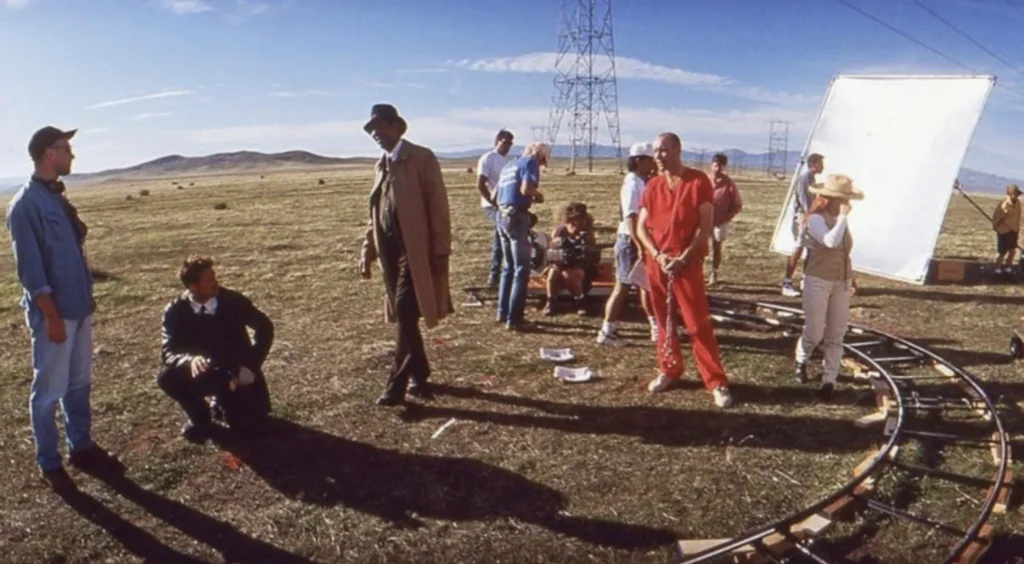
What’s Aged the Best
I think the concept itself for this movie has really aged well; we covered it a little at the top, but the idea of a serial killer following the Seven Deadly Sins for their MO is pretty unique and original. Not listing Kevin Spacey’s credit anywhere until the end credits was really smart too – he was a pretty big name actor by that point, and if you’re going into the movie knowing that it stars Freeman, Pitt, and Spacey, you would pretty quickly deduce that Spacey was the killer since he doesn’t appear in any scenes for over an hour. I like when movies do their best to allow for cameos when they’re more than just for five minutes of screen time – the most recent one I can think of is Matt Damon showing up out of the blue in Interstellar. The duo being named “Somerset and Mills” just has a really nice ring to it as well. It’s on par with “Cagney and Lacey” or “Starsky and Hutch” to me. Not actually showing us what’s in the box was another really smart decision; we know what’s in there, we know that it is evil and vile and horrible, but Fincher leaves it to the viewer’s imagination to picture the actual contents. I think a lot of other directors might want to go for extra shock value of actually panning over Freeman’s shoulder to see what’s inside ourselves, but practically speaking I think it would have just looked bad and turned out to be much hokier than anyone would’ve wanted. It was the right call to keep it hidden.
What’s Aged the Worst
Kevin Spacey.
The Jason Clarke Award (What’s Their Name Again?)
For me this one has to be Mark Boone Junior – I instantly recognized him from Batman Begins and Memento, but he has well over 100 credits to his name so I think almost everyone has seen him in at least something. You could make the case for R. Lee Ermey (as that guy from Full Metal Jacket), but I think enough people actually know him to be Lee Ermey that he gets edged out by Boone. Congrats, Mark!
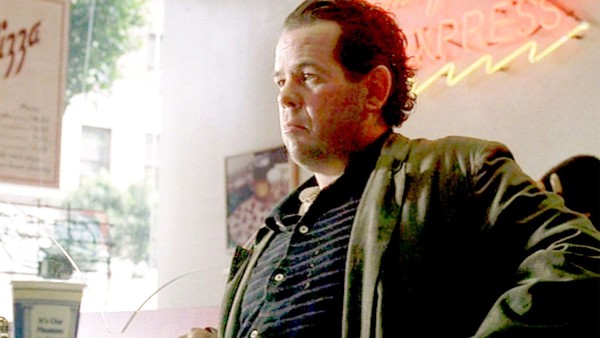
The Jack Nicholson Award (Big Impact, Small Role)
We have an interesting situation on our hands, and I am going to take full control of it. This award was given out to Kevin Spacey, but he has been retroactively stripped of it similar to Reggie Bush being retroactively stripped of his Heisman in 2010, or the 2013 Louisville men’s basketball team having their NCAA championship vacated. So in keeping with that theme, we are proud to present the Jack Nicholson Award in Seven to Gwyneth Paltrow! She is magnetic in every scene she has, while still only being in about three scenes total. You can feel the love that she has for Mills that contradicts with the hatred she has for the city and what it is doing to them. She does an outstanding job in what is considered her first big feature film role, and she is well deserving of the recognition. Congrats, Gwyneth!
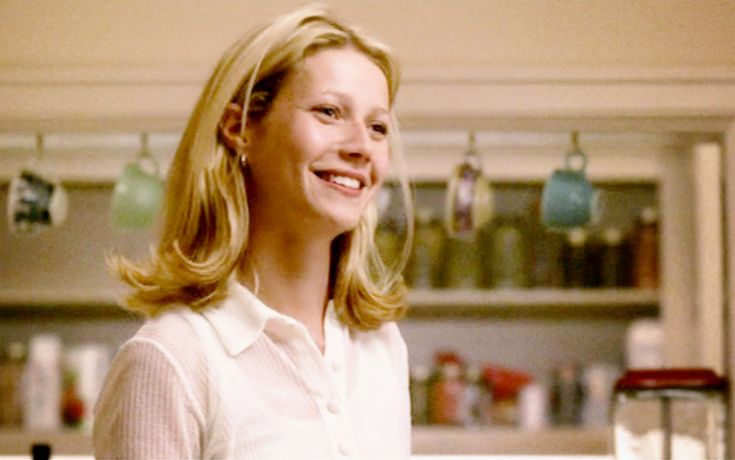
The Roger Deakins Award (Best Cinematography)
Director of Photography Darius Khondji was born in Iran and raised in France, and went to school at UCLA and NYU, studying film. After graduating he moved back to France in 1981 and was an assistant for cinematographers and also worked as a lighting director for music videos and commercials. He went on to shoot a Nike commercial with David Fincher, which led to the two pairing up in 1995 for Seven. He has quite a full résumé, including Alien: Resurrection, Panic Room, Midnight in Paris, Uncut Gems, Okja, and Mickey 17. Khondji’s work in Seven isn’t necessarily about the sweeping crane shots or beautiful landscapes you might see in something like The Banshees of Inisherin or Arrival. It’s more in the smaller, shorter shots that he shines, along with a call back to his former days as a lighting director. The scenes are often very dark and dimly lit, owing to Khondji and Fincher’s decision to make the film feel as gritty and bleak as possible. Little things like using green color gels on the lighting rigs for the Sloth scene helped provide for a grimier and grosser feel as opposed to traditional lighting or color grading it in post. This YouTube video has a nice little compilation of some of the really cool shots they got throughout the movie.
Best Quote
- “But that’s the point. We see a deadly sin on every street corner, in every home, and we tolerate it. We tolerate it because it’s common, it’s trivial. We tolerate it morning, noon, and night. Well, not anymore. I’m setting the example. What I’ve done is going to be puzzled over and studied and followed… forever.”
- “Ernest Hemingway once wrote, ‘The world is a fine place and worth fighting for.’ I agree with the second part.”
- “If we catch John Doe and he turns out to be the devil, I mean if he’s Satan himself, that might live up to our expectations, but he’s not the devil. He’s just a man.”
- “What’s in the box?!”3
- “But you gotta be a hero. You want to be a champion. Well, let me tell you. People don’t want a champion. They want to eat cheeseburgers, play the lotto and watch television.”
Trivial Pursuit
- Brad Pitt insisted on performing his own stunts in the movie, which led to him slipping on the hood of a car at one point and his arm going through the windshield. His hand and arm were cut very deeply and he required stitches. He came back for filming a few days later and Fincher and Walker wrote the injury into the script so that Pitt could continue to actually wear the cast that he needed to for the remainder of the filming.
- After searching his apartment, Mills and Somerset visit Wild Bill’s Leather Store in search of information about John Doe, and the clerk mentions that Doe “had a limp.” As they stand there, a man with a limp is seen watching the detectives from outside the store.
- All of the building numbers in the opening scene start with a 7, and the delivery at the end of the movie was set for 7pm.
- The idea for the scrapped sequel ended up being made into the standalone film Solace in 2015, which became a commercial and critical bomb.
- The fingerprint technician is played by Morgan Freeman’s son, Alfonso.
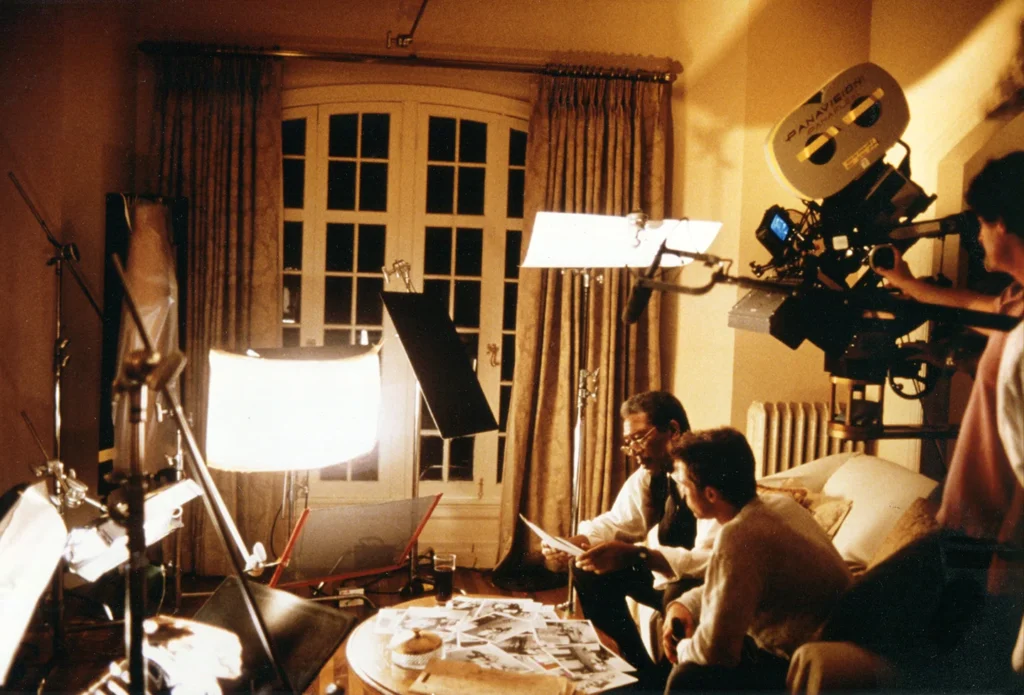
Six Degrees of Kevin Bacon
- Morgan Freeman: 2 (Freeman appeared in The Bonfire of the Vanities with Richard Belzer, who appeared in The Big Picture with Kevin Bacon)
- Brad Pitt: 1 (Pitt appeared in 8 with Kevin Bacon)
- Gwyneth Paltrow: 2 (Paltrow appeared in Love and Other Disasters with Orlando Bloom, who appeared in Tour de Pharmacy with Kevin Bacon)
- I checked all the major acting credits for this movie, and the highest number was two. The theory lives!
Would My Mom Like This Movie?
I’m test driving a new category here that I thought of the other day, and it’s really quite simple…would my mom like this movie? This category is both a fun way to talk about the movie’s vibe and also a way for me to answer the questions she asks me after every post that I write on here, “Do you think I would like this movie?” Today’s answer is a resounding no. The elevator pitch for this movie is “it’s two cops who are tracking down a serial killer who is torturing his victims via the Seven Deadly Sins”…not really her thing. I think even outside of the sometimes grotesque imagery and nature of this film, it’s still just not up her alley in terms of piquing her interests. If this were more of a biopic that was based on something that had actually happened, we might get her on board. I think I like this category, let me know if you do too!

Conclusion
Seven is quite a triumph in many different ways. It was a triumph for David Fincher – he was coming off of Alien 3 which nobody (Fincher included) liked, and he was questioning whether he wanted to make movies anymore. To go from that, to making this film, and then going on to have the career that he has, is remarkable. It was a triumph for Brad Pitt – he was coming off of his “pretty boy” typecasting era, with most of his previous roles revolving around his charm and good looks. Hoping to avoid this stereotype moving forward, Pitt decided to branch out and take this role. The rest is history. It was a triumph for edgier blockbusters, as well. Prior to Seven coming out in 1995 and making over $300 million, virtually every other blockbuster to that point wasn’t nearly as dark. There are a few exceptions like The Exorcist and The Silence of the Lambs, but I might even argue that those films don’t match the tone of Seven. Either way, I think it at least helped pave the way for darker films to be more successful commercially and critically. It’s a really well made film that I’m glad after years sitting on my watch list, I finally got around to seeing. It was worth the wait.
- The list of actors to turn down a role in this film includes Al Pacino, Denzel Washington, Robert Duvall, Christina Applegate, Val Kilmer, and Gene Hackman. ↩︎
- I kinda hate the fact that Seven got such little respect on the major awards circuit that I’m having to include the MTV Movie and TV Awards, and I hate even more that they have an award for “most desirable male”. ↩︎
- Did you really think I was going to pick anything else? ↩︎

